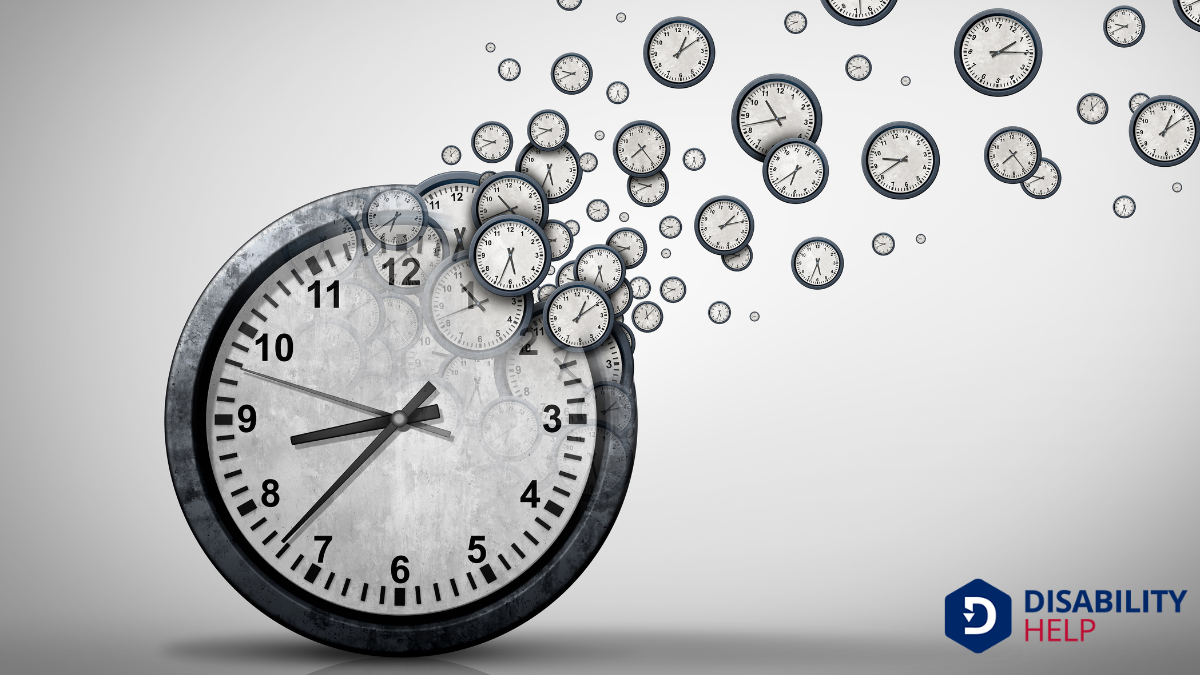In short-term disability plans, we usually encounter waiting periods ranging from 7 to 14 days before benefits kick in. These periods, known as elimination periods, validate claim legitimacy and give us a chance to plan finances. During this time, no benefits are paid out, so understanding your policy’s waiting period is essential for financial preparedness. By exploring this further, we'll gain insight into managing these gaps effectively.
Key Takeaways
- Short-term disability plans typically include a waiting period, known as the elimination period, before benefits begin.
- Waiting periods generally range from 7 to 14 days after a disability occurs.
- The waiting period is crucial for preventing misuse and ensuring claim legitimacy.
- Benefits start post-waiting period, affecting financial support during recovery.
- Understanding waiting periods is essential for effective financial planning and decision-making.
Understanding Short-Term Disability Insurance
When it comes to maneuvering the complexities of short-term disability insuranceInsurance that provides income replacement for a limited time when an employee is unable to work due..., our primary goal is to understand how it protects our income during temporary periods of illness or injury.
This type of insurance serves as a financial safety net, ensuring we can meet our financial obligations even when we're unable to work. It provides peace of mind by covering a portion of our regular income, allowing us to focus on recovery instead of financial stress.
We must familiarize ourselves with the specific terms of our policy, as they can vary widely. This includes the duration of coverage and the percentage of income replaced.
What Are Waiting Periods?

Let's explore what waiting periods are and why they're vital in short-term disability plans.
Waiting periods are fundamentally the time we must wait after a disability occurs before benefits kick in, and they typically range from a week to a month.
Understanding this duration helps us plan our finances and manage expectations during a challenging time.
Importance of Waiting Periods
Waiting periods in short-term disability plans, though sometimes overlooked, play an essential role in maintaining the integrity and sustainability of these programs. They help prevent misuse and guarantee that only legitimate claims receive benefits.
By requiring us to wait a specified period before benefits start, these periods discourage fraudulent claims and reduce administrative costs, keeping premiums affordable. This waiting time also encourages employees to return to work if they can recover quickly, minimizing the strain on resources.
For employers, it provides a buffer to manage unexpected absences and plan for temporary replacements. Understanding waiting periods helps us appreciate their purpose: protecting both employees and employers while guaranteeing the system remains fair and functional for those truly in need.
Typical Duration Explained
Understanding the importance of waiting periods in short-term disability plans naturally leads us to explore their typical duration. Typically, these waiting periods range from 7 to 14 days. This means that after we experience a qualifying disability, we’ll need to wait this specified time before benefit payments commence.
The rationale is to guarantee that the claim is genuine and to encourage employees to return to work if they're able to do so quickly.
It's essential for us to check with our specific plan, as waiting periods can vary. Some plans may offer shorter or even longer durations.
How Waiting Periods Affect Your Benefits
When we comprehend waiting periods in our short-term disability plans, we can better gauge how they impact the duration of our coverage.
These waiting periods determine when our benefits kick in, potentially affecting the financial support we receive during a disability.
Understanding Waiting Periods
Although some aspects of short-term disability plans might seem confusing, understanding waiting periods is essential to maximizing your benefits.
In these plans, a waiting period is the time we must wait after becoming disabled before we start receiving benefits. Typically, this period ranges from a few days to a couple of weeks.
Knowing this timeframe helps us plan financially and mentally for the gap between our last paycheck and the start of disability benefitsFinancial assistance provided to individuals who are unable to work due to a disability, such as Soc.... By familiarizing ourselves with the terms of our plan, we can make informed decisions and avoid unexpected financial strain.
Let’s remember that the waiting period is a standard part of insurance policies and not a reflection of our eligibility or the severity of our condition.
Impact on Coverage Duration
Waiting periods don't just affect the start of our benefits; they also impact the overall duration of coverage.
When we encounter a waiting period, the clock doesn't pause on the maximum length of our short-term disability benefits. This means that if our plan offers benefits for up to 26 weeks, but requires a 2-week waiting period, we'll only receive benefits for 24 weeks.
It's essential to understand this because it directly affects how long we can rely on financial support during our recovery period. By knowing how waiting periods work, we can plan better, ensuring that we're prepared for any gaps between the onset of our disability and when the benefits kick in.
Let's make informed decisions together.
Typical Duration of Waiting Periods
In most short-term disability plans, the typical duration of waiting periods ranges from 7 to 14 days. This waiting period, often referred to as the "elimination period," serves as a buffer before benefits kick in.
During this time, we’re responsible for covering our own expenses. It’s vital to plan accordingly, guaranteeing we've enough savings or other income to bridge this gap.
Knowing the exact length of the waiting period helps us prepare financially and reduces anxiety about when support will begin. Understanding this timeframe empowers us to make informed decisions about our short-term disability coverage.
Let’s confirm we’re aware of our plan’s specifics so we can handle any unexpected disability with greater confidence and less stress.
Factors Influencing Waiting Period Length

Understanding the typical duration of waiting periods helps us prepare, but it's equally important to explore what influences these lengths. Several factors play a role in determining how long we might wait before benefits begin.
First, the nature of our employment and the specific policy our employer offers can greatly impact the waiting period. Policies may vary in their definitions of short-term disability and the required waiting time.
Additionally, the industry standards and regulatory environment might influence decisions on waiting periods. For instance, industries with higher risks may have shorter waiting periods to guarantee employees aren't left without support.
Finally, our personal choices, like opting for supplemental coverage, can sometimes shorten these periods. Recognizing these factors aids in better planning and decision-making.
Comparing Waiting Periods Across Different Plans
When we compare waiting periods across different short-term disability plans, it's clear that no two policies are exactly alike. Some plans might require only a few days, while others could extend to several weeks before benefits begin.
The length of the waiting period often depends on the insurer and the coverage level we choose. Some plans offer flexibility, allowing us to select a shorter waiting period in exchange for higher premiums. Others might have a fixed waiting period that's non-negotiable.
It's important for us to thoroughly read the policy details to understand these differences. By doing so, we can guarantee we select a plan that best aligns with our financial needs and risk tolerance during the initial period of disability.
Strategies to Manage Financial Gaps During Waiting Periods
Maneuvering the financial gaps during the waiting periods of short-term disability plans can be challenging, but several strategies can help ease the burden.
First, let's prioritize creating an emergency savings fund. Even small, consistent contributions can accumulate into a useful buffer.
Next, consider cutting non-essential expenses. By reviewing our spending habits, we can identify areas where we can save.
Additionally, exploring temporary income sources, like freelancing or selling unused items, might offer relief.
It's also wise to communicate with creditors about our situation to negotiate payment deferrals or reduced payments, if possible.
Finally, let's enlist support from family or community resources, ensuring we've a safety net.
These steps can help us bridge financial gaps effectively.
Questions to Ask About Waiting Periods When Choosing a Plan

As we explore managing financial gaps during waiting periods, it's equally important to reflect on the questions we should ask about these waiting periods when selecting a short-term disability plan.
Understanding these details helps us make informed choices that align with our needs. Here are key questions to ponder:
- How long is the waiting period before benefits start? Verify it aligns with your financial situation.
- What conditions trigger the waiting period? Clarify specific scenarios that apply.
- Are there any exceptions or waivers for the waiting period? Some plans may offer flexibility.
- How is the waiting period calculated? Knowing the calculation method aids in planning.
- Can the waiting period be adjusted? Check if there's customization based on personal needs.
These questions will guide us toward a suitable plan.
The Role of State Regulations in Waiting Periods
Although often overlooked, state regulations play an essential role in shaping the waiting periods of short-term disability plans. Each state can impose its own rules, which means that waiting periods might vary depending on where we live.
Some states have specific mandates that insurers must follow, guaranteeing that waiting periods are neither too short nor too long. These regulations aim to balance the interests of both employees and insurers, assuring fair practices.
We must familiarize ourselves with our state’s guidelines, as they directly influence our plan options. Understanding these regulations helps us make informed decisions when selecting a plan.
Conclusion
In conclusion, understanding the waiting periods in short-term disability plans is vital for effectively managing our finances during unexpected health challenges. By comparing different plans, considering factors that influence waiting periods, and exploring strategies to bridge financial gaps, we can make informed decisions that best suit our needs. Let's not forget to ask the right questions and consider state regulations, ensuring we choose a plan that provides the support we need when it matters most.






